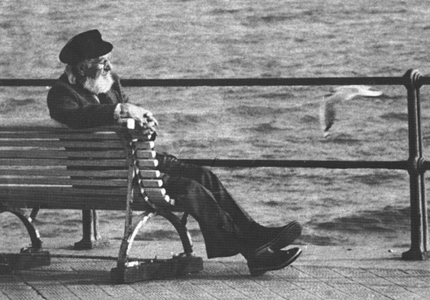Franck Mortelmans

° 24.07.1898 Antwerpen - † 04.04.1986 Antwerpen
- pastel painter
- son of Antoon Mortelmans
- cousin of Lodewijk and Frans Mortelmans

Biography
Franck Mortelmans was born on 24 July 1898 in Klapdorp 121 in Antwerp, the parental home of the Mortelmans family. After all, his father Antoon took over the shop and small printing shop from the parents. Franck grew up in the same house as Antoon and his brothers, the painter Frans Mortelmans and the composer Lodewijk Mortelmans.
Franck's youth was a great discovery of the harbour area and the polders behind it. His love for the Scheldt River, for the polder landscapes and for port activities will later prove abundant in his many pastel works and drawings. From his childhood on it becomes clear that Franck's drawing is in his blood. He follows the lessons in the Academy of Antwerp with Isidoor Opsomer and Julian de Vriendt. In the Academy of Berchem with his uncle Frans, in the private school of Henry Luyten in Brasschaat, and for a while in the studio for animal painting with Frans Hens.
In 1919 he joined the modernist circle 'Lumière', founded by his good friend Roger Avermaete. In that period he experimented with tight depictions in strong colors, albeit without being artificial, but still continuing to work in a formal way. In the Lumière circuit, the main focus was on linocut and wood engraving, which revived the art of woodcarving. In this circle artists such as the Belgians Frans Masereel, Joris Minne, Henry Van Straten, the brothers Joseph and Jan-Frans Cantré (the so-called Five), Joseph Peeters, Felix Timmermans, etc. circulated. Also the Dutch including Fokko Mees, and the French Jean-Emile Laboureur, Jean Lebedeff, Henri Le Fauconnier and André Lhote, the Germans Max Pechstein, Erich Heckel, Conrad Felixmuller and Hans Orlowski. From the very beginning it was a very international company.
In 1926, Franck became a teacher at the School for Craftmanship, founded by Roger Avermaete and remained there until 1946. The first classrooms were in the Lantschot chapel on the Falconrui, where around 1900 the social philosophical movement 'De Kapel’ (The Chapel) had its home base, and where his uncle Lodewijk Mortelmans gave concerts for the numerous listeners there.
'De Kapel' was a gathering place for artists and intellectuals, and lectures, exhibitions and concerts were held for everyone who wanted to hear or see it.
At the beginning of the thirties Franck joined the 'Modern art' circle. In this circle he meets artists such as Gerard Baksteen, Ernest Albert, Oscar Verpoorten, Pieter Rottie, Gustaaf Van Steenwegen, Edmond Van Dooren, Frans van Giel, Paul Joostens and sculptor Albert Poels.
Franck also became a teacher at the Academy of Berchem in 1936 and at the Academy of Fine Arts in Antwerp in 1946. In 1958 he became director of the Academy of Berchem, and remained so until his retirement in 1968.
One of his bosom friends is the artist Oscar Van Rompay of Lier, with whom he often speaks and who has the same philosophy about art. Together they exchange ideas about art and its evolutions. Both have a great deal of reticence with regard to the modern artistic tendencies prevailing at the time.
The work of Franck Mortelmans, who followed the path of modernism in the twenties, slowly returned to a more classical style of form. The focus is on the horizon lines, the water of rivers or the sea, and the wondrous play of clouds. Images that, just like Claude Monet, depict a snapshot of a changing atmosphere in a landscape or sea view. And that's what Franck Mortelmans wants to show us in his work.
His drawings often seem rough sketches, but Franck succeeds in showing a lot, sometimes with little pencil or ink. Franck Mortelmans has exhibited a lot, but he cherished too much of his own work to sell it. As a Pastellist he was also an excellent portraitist, sometimes large portraits on commissions from the bourgeoisie, but above all a great many small portraits that he invariably passed on to his models.
Franck Mortelmans was an Officer in the Crown Order and in the Leopold Order.
In 1983, the province of Antwerp awarded him ‘de Versierselen van het Poorterschap’.
Franck Mortelmans will dedicate his entire life to the preservation of nature and urban beauty. He first became an exchange of letters member of the Royal Commission for Monuments and Sites, where he seated until he was compulsorily retired at the age of seventy in 1968.
After the death of his first wife Mit Matthé in 1972, he remarried Melanie Diris (1936-2010) in 1977. Together they share another 10 happy years until his death on April 4th of 1986. Franck is buried at the small honorary park of the cemetery Schoonselhof.
Text: Dirk Schiltz





























































